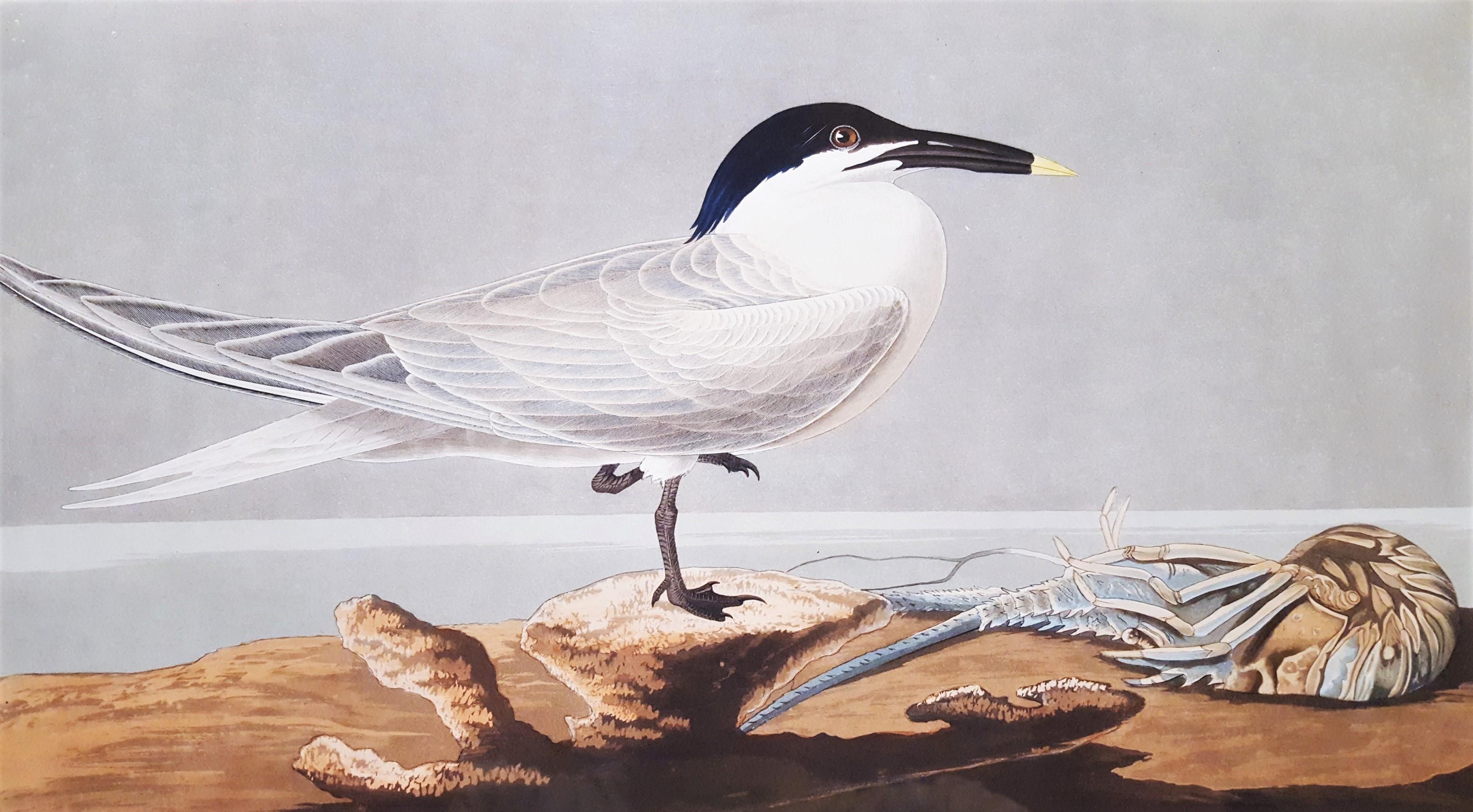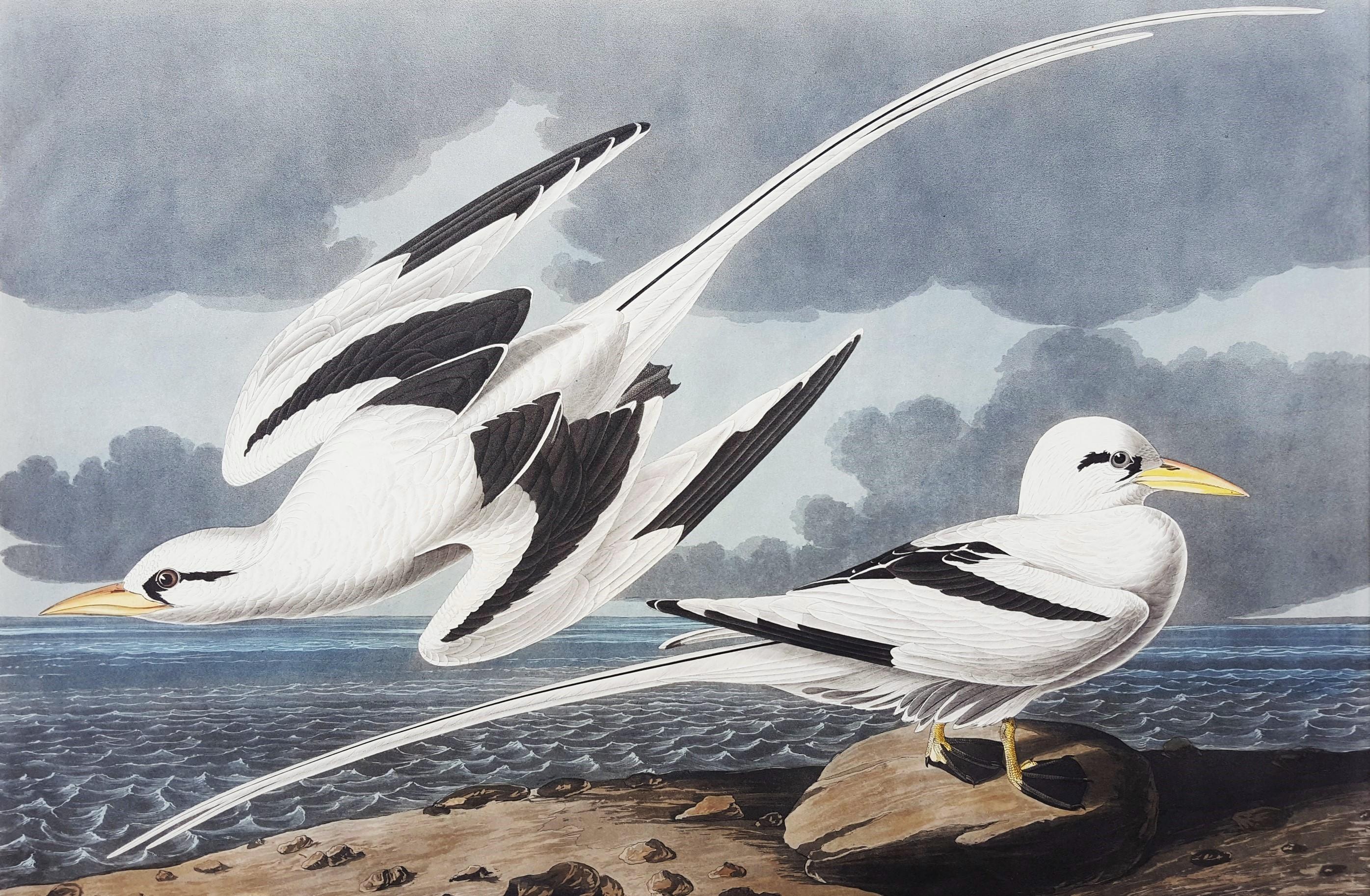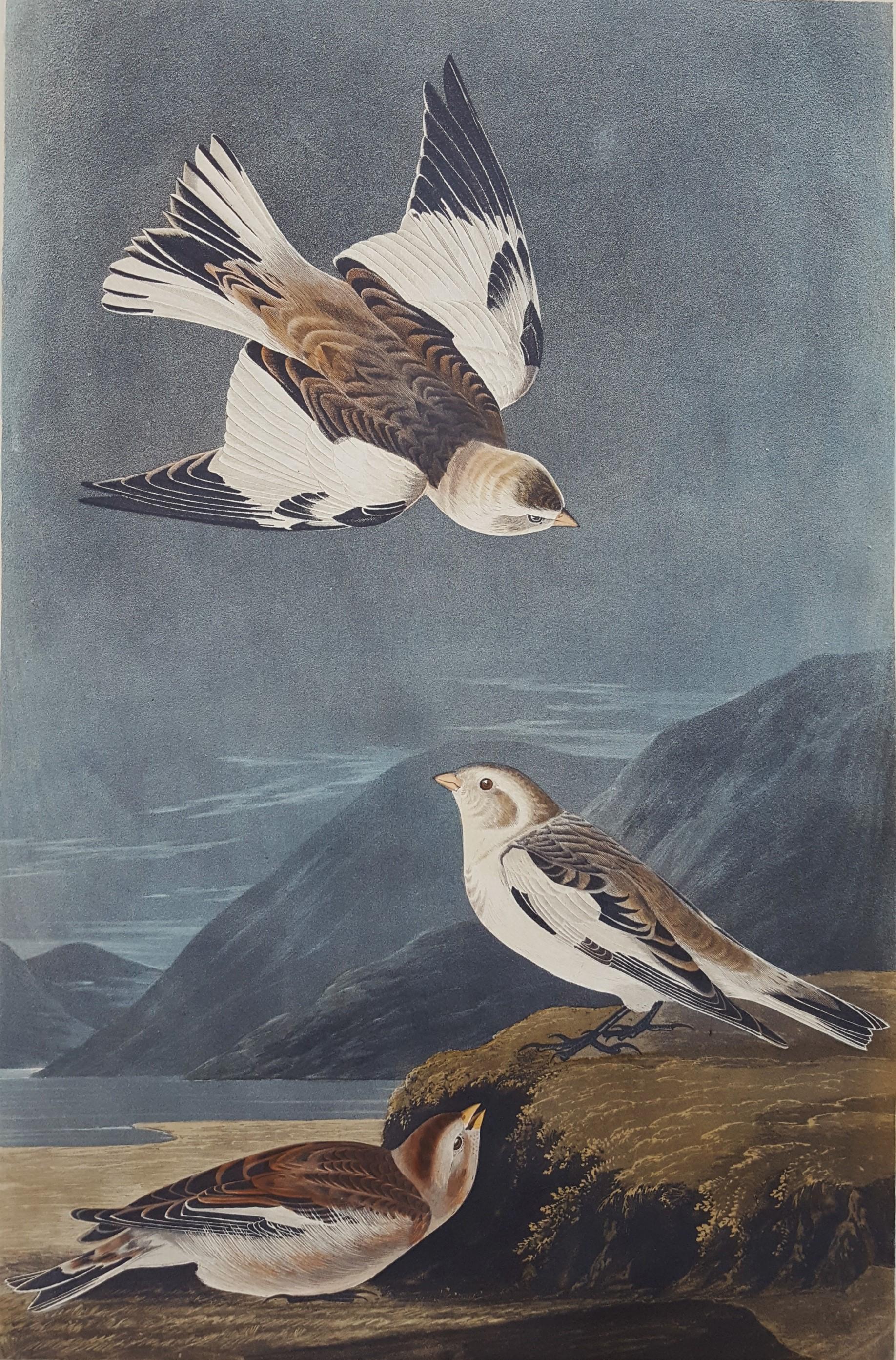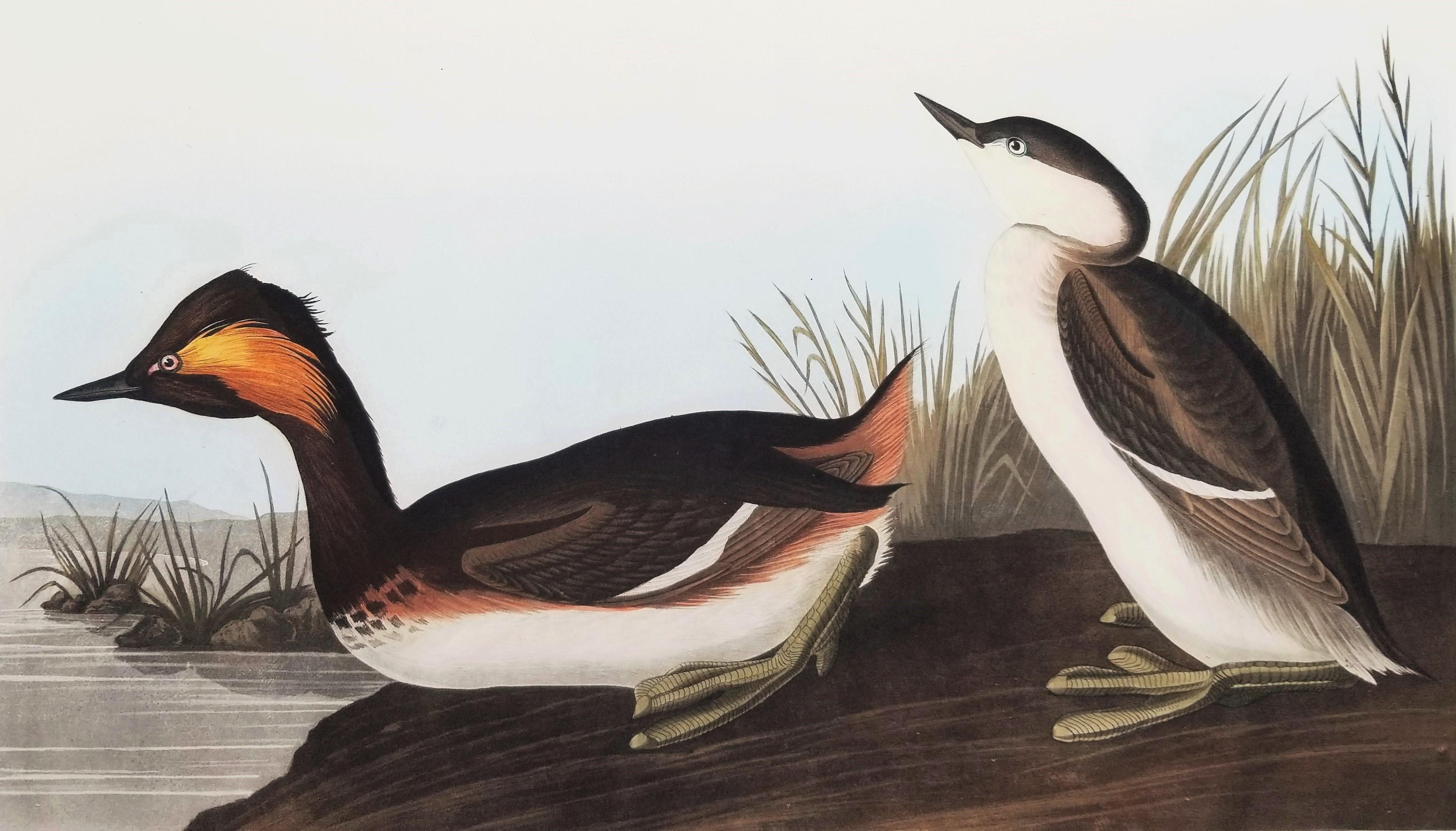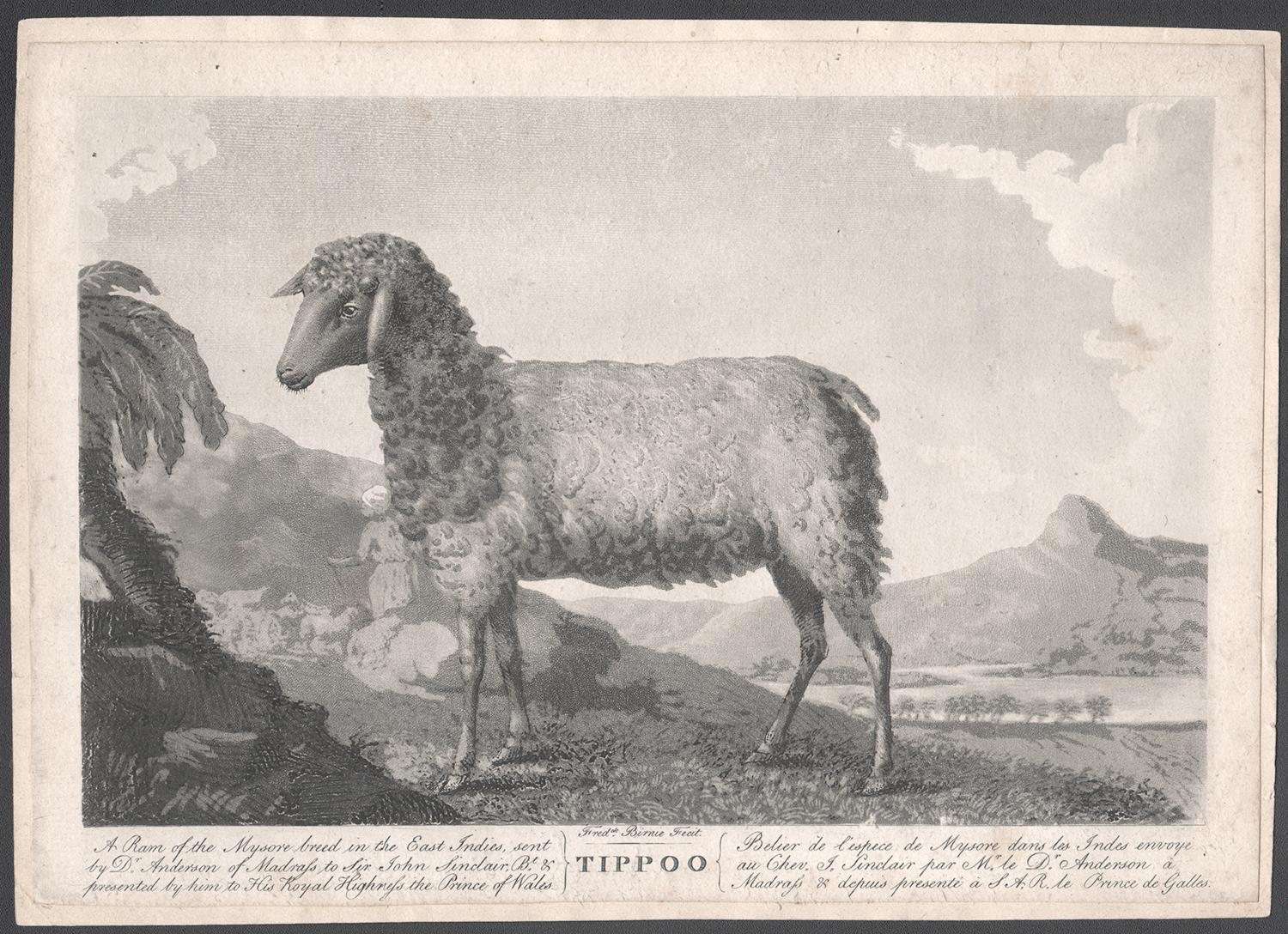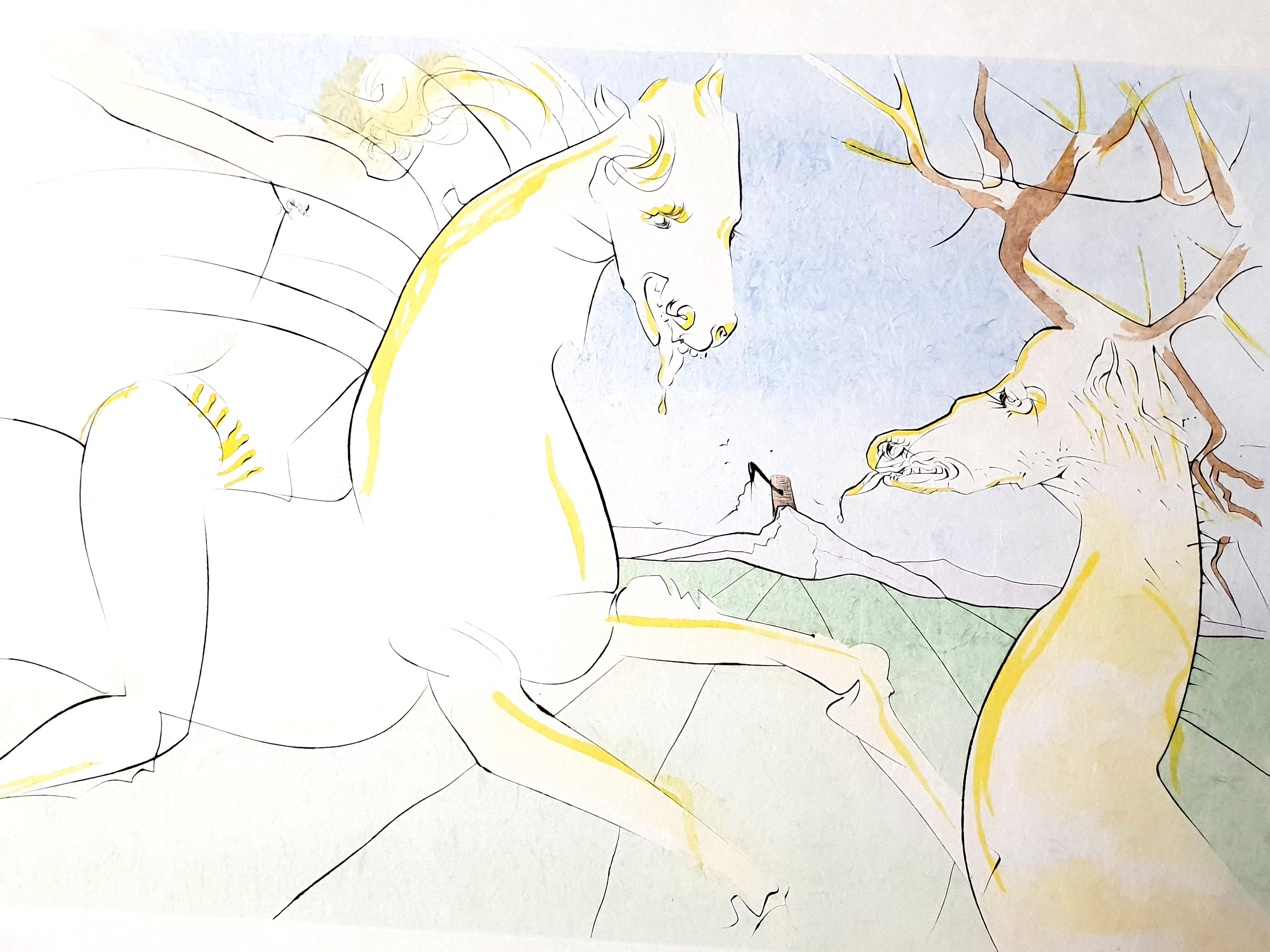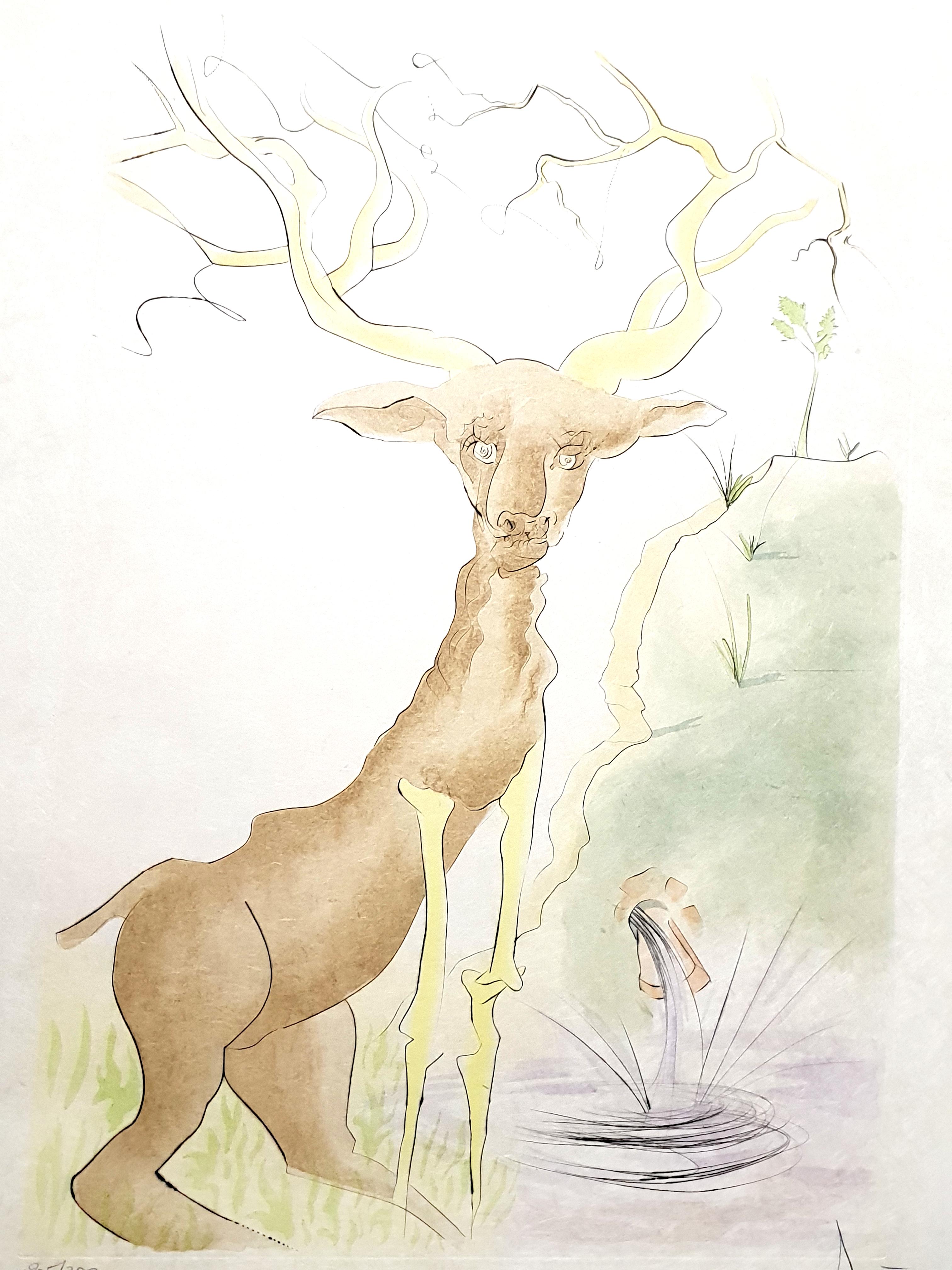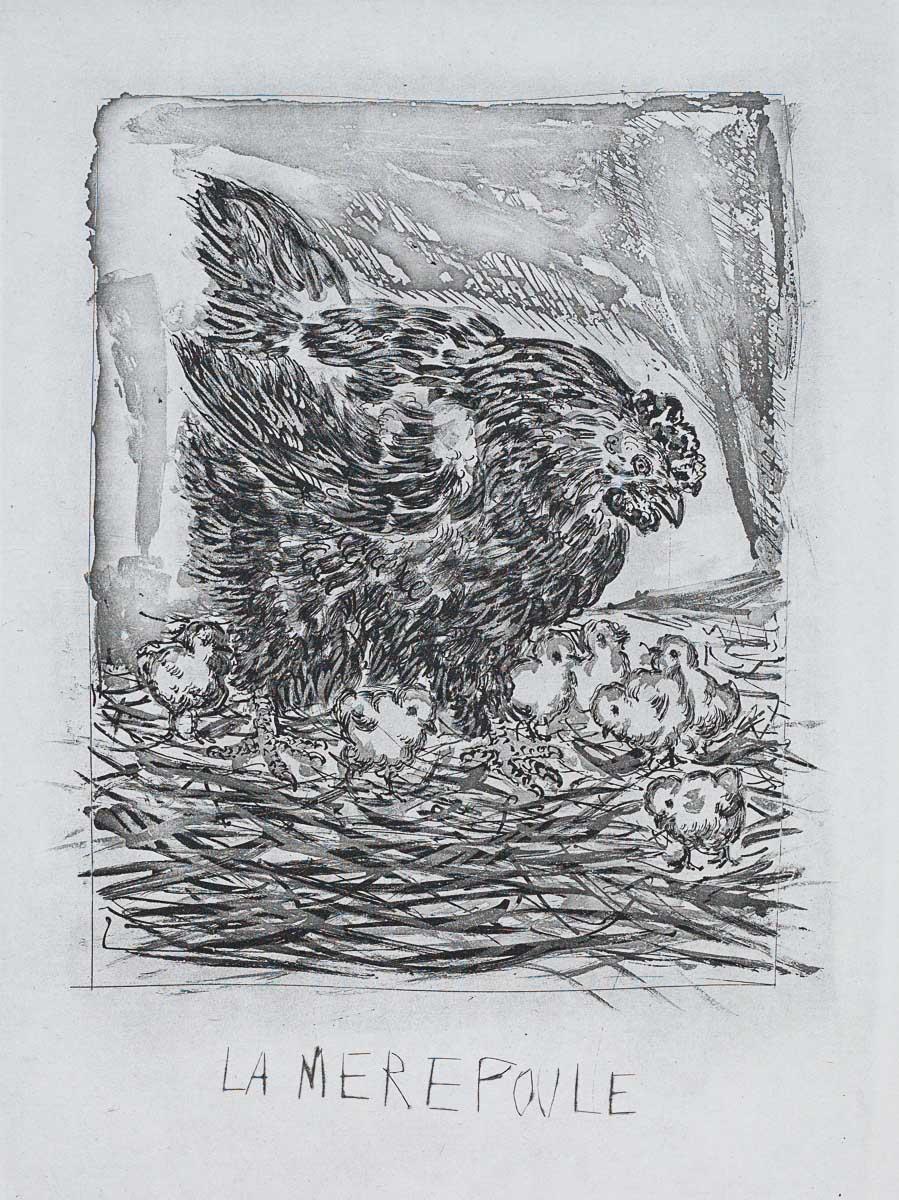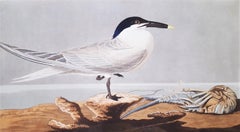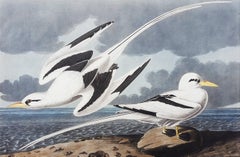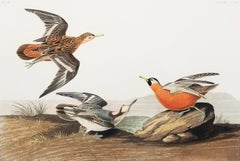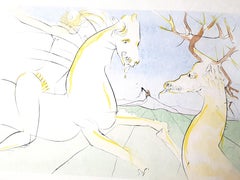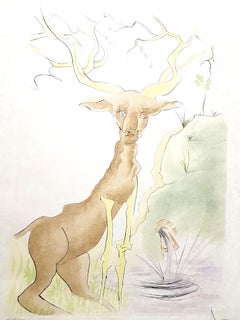
Snow Bunting
Want more images or videos?
Request additional images or videos from the seller
1 of 9
John James AudubonSnow Bunting1834
1834
About the Item
- Creator:John James Audubon (1785-1851, American, French)
- Creation Year:1834
- Dimensions:Height: 46 in (116.84 cm)Width: 37 in (93.98 cm)
- Medium:
- Movement & Style:
- Period:
- Condition:
- Gallery Location:Saint Augustine, FL
- Reference Number:1stDibs: LU1212339862
John James Audubon
John James Audubon (April 26, 1785, Les Cayes, Saint-Domingue (later Haiti) – January 27, 1851 (aged 65) Manhattan, New York, U.S.), born Jean-Jacques Audubon, was an American ornithologist, naturalist, and painter. He was notable for his expansive studies to document all types of American birds and for his detailed illustrations that depicted the birds in their natural habitats. His major work, a color-plate book entitled The Birds of America (1827–1839), is considered one of the finest ornithological works ever completed. Audubon identified 25 new species.
About the Seller
5.0
Platinum Seller
These expertly vetted sellers are 1stDibs' most experienced sellers and are rated highest by our customers.
Established in 1978
1stDibs seller since 2015
1,221 sales on 1stDibs
More From This SellerView All
- Sandwich Tern (with Florida Cray Fish) (Florida Keys) /// Ornithology AudubonBy John James AudubonLocated in Saint Augustine, FLArtist: John James Audubon (American, 1785-1851) Title: "Sandwich Tern (with Florida Cray Fish) (Florida Keys)" (Plate CCLXXIX - 279; part No. 56) Portfo...Category
1830s Victorian Animal Prints
MaterialsGold Leaf
- Tropic Bird /// Ornithology John James Audubon Shorebird Ocean Beach SeascapeBy John James AudubonLocated in Saint Augustine, FLArtist: John James Audubon (American, 1785-1851) Title: "Tropic Bird" (Plate CCLXII - 262; part No. 53) Portfolio: The Birds of America, Havell Edition Year: 1835 Medium: Original Hand-Colored Engraving with Aquatint on double-elephant folio, J. Whatman paper Limited edition: approx. 180 Printer: Robert Havell Jr., London, England Publisher: John James Audubon, London, England Framing: Not framed, but matted in a handmade custom French matting Matted size: 30" x 38.75" Sheet size: 25.5" x 36" Platemark size: 20.75" x 30.25" Image size: 18.5" x 27.75" Condition: A few tiny foxmarks. In excellent condition with clean paper and strong colors Rare Notes: Provenance: private collection - New York, NY. Engraved, printed, and hand-colored by English artist Robert Havell Jr. (1793-1878). Comes from Audubon's monumental book volume "The Birds of America", (Havell Edition, 1827-1838), which consists of 435 hand-colored, life-size prints, made from engraved plates, with each sheet originally measuring around 39" x 26". "J. Whatman 1835" watermark upper right. Based on a composition painted between 1832 and 1835. Audubon sailed the entire length of Florida, around the Keys and as far as the Dry Tortugas, from which, on another occasion, "The specimens - in the plate were taken - by my kind friend Robert Day, Esq. of the United States Revenue Cutter...Category
Early 1800s Victorian Animal Prints
MaterialsIntaglio, Watercolor, Engraving, Aquatint
- Red Phalarope /// Ornithology John James Audubon Bird Animal Landscape HavellBy John James AudubonLocated in Saint Augustine, FLArtist: John James Audubon (American, 1785-1851) Title: "Red Phalarope" (Plate CCLV - 255; part No. 51) Portfolio: The Birds of America, Havell Edition Year: 1835 Medium: Original Hand-Colored Engraving with Aquatint on double-elephant folio, J. Whatman paper Limited edition: approx. 180 Printer: Robert Havell Jr., London, UK Publisher: John James Audubon, London, UK Sheet size: 22.25" x 29" Platemark size: 15.75" x 22.63" Image size: 13.25" x 20.75" Condition: One small tear upper left in margin which has been professionally repaired. In excellent condition with clean paper and strong colors Rare Notes: Comes from Audubon's monumental book volume "The Birds of America", (Havell Edition, 1827-1838), which consists of 435 hand-colored, life-size prints, made from engraved plates, with each sheet originally measuring around 39" x 26". Engraved, printed, and hand-colored by English artist Robert Havell Jr. (1793-1878). "J. Whatman 1834" watermark upper left. Based on a composition painted in London in 1835. Edward Dwight...Category
1830s Victorian Animal Prints
MaterialsWatercolor, Intaglio, Engraving, Aquatint
- Snow Bunting /// Ornithology John James Audubon Bird Animal Landscape Havell ArtBy John James AudubonLocated in Saint Augustine, FLArtist: John James Audubon (American, 1785-1851) Title: "Snow Bunting" (Plate CLXXXIX - 189; part No. 38) Portfolio: The Birds of America, Havell Edition ...Category
1830s Victorian Animal Prints
MaterialsEngraving, Aquatint, Watercolor, Intaglio, Rosewood
- Eared Grebe /// John James Audubon Ornithology Havell Edition Bird Animal ArtBy John James AudubonLocated in Saint Augustine, FLArtist: John James Audubon (American, 1785-1851) Title: "Eared Grebe" (Plate CCCCIV - 404; part No. 81) Portfolio: The Birds of America, Havell Edition Year: 1838 Medium: Original Ha...Category
1830s Victorian Animal Prints
MaterialsWatercolor, Engraving, Aquatint, Intaglio
- Greenshank (View of St. Augustine & Spanish Fort East Florida) /// Bird AudubonBy John James AudubonLocated in Saint Augustine, FLArtist: John James Audubon (American, 1785-1851) Title: "Greenshank (View of St. Augustine & Spanish Fort East Florida)" (Plate CCLXIX - 269; part No. 54) Portfolio: The Birds of America, Havell Edition Year: 1835 Medium: Original Hand-Colored Engraving with Aquatint on double-elephant folio, J. Whatman paper Limited edition: approx. 180 Printer: Robert Havell Jr., London, England Publisher: John James Audubon, London, England Framing: Recently framed in an ornate black and gold moulding with fabric rag matting and gold filet Framed size: 26.25" x 31.75" Sheet size: 21.75" x 27.25" Platemark size: 15" x 20.63" Image size: 12" x 18" Condition: The sheet is laid down to board. Light toning and discoloration to sheet. The occasional pinhole or faint surface abrasion. In otherwise good condition with good colors Rare Notes: Provenance: private collection - Denver, CO. Engraved, printed, and hand-colored by English artist Robert Havell Jr. (1793-1878). Comes from Audubon's monumental book volume "The Birds of America", (Havell Edition, 1827-1838), which consists of 435 hand-colored, life-size prints, made from engraved plates, with each sheet originally measuring around 39" x 26". The would be "J. Whatman 1835" watermark is likely missing due to its trimming. The composition was probably painted in England in 1835, using a preserved specimen. Since no other than Audubon has ever claimed to have seen this European...Category
1830s Victorian Animal Prints
MaterialsWatercolor, Engraving, Aquatint, Intaglio
You May Also Like
- Tippoo, antique India sheep aquatint engraving, circa 1780Located in Melbourne, Victoria‘Tippoo - A Ram of the Mysore breed in the East Indies, sent by Dr. Anderson of Madrass to Sir John Sinclair, Bt & presented by him to His Royal Highness...Category
19th Century Victorian Animal Prints
MaterialsAquatint
- Salvador Dali - The Rider and the Deer - Handsigned EngravingBy Salvador DalíLocated in Collonge Bellerive, Geneve, CHSalvador Dali - The Rider and the Deer - Handsigned Engraving 1974 Hand signed by Dali Edition: /250 The dimensions of the image are 22.8 x 15.7 inches on 3...Category
1970s Surrealist Figurative Prints
MaterialsDrypoint, Aquatint
- Salvador Dali - Le Cerf from Le Bestiaire de la Fontaine - Signed EngravingBy Salvador DalíLocated in Collonge Bellerive, Geneve, CHSALVADOR DALI Le Cerf se voyant dans l'eau from Le Bestiaire de la Fontaine 1974 Hand signed by Dali Edition: /250 The dimensions of the image are 22.8 x 15.7 inches on 31 x 23.2 in...Category
1970s Surrealist Figurative Prints
MaterialsDrypoint, Aquatint
- The Mother Hen, 1942 (Histoire Naturelle - Textes de Buffon, B.345)By Pablo PicassoLocated in Greenwich, CTThe Mother Hen is an aquatint and drypoint print on chine from one of the deluxe copies of Picasso's 1942 Histoire Naturelle - Textes de Buffon series. The image size is 10.6 x 8 inc...Category
20th Century Modern Prints and Multiples
MaterialsDrypoint, Aquatint
$8,995 Sale Price30% Off - The Goldfinch, 1942 (Histoire Naturelle - Textes de Buffon, B.348 )By Pablo PicassoLocated in Greenwich, CTThe Goldfinch is an aquatint and drypoint print on chine from one of the deluxe copies of Picasso's 1942 Histoire Naturelle - Textes de Buffon series. The image size is 11.2 x 8.25 inches, unsigned as issued, and framed in a contemporary silver and gray moulding. One of about 36 prints that exist with Picasso's remarqued title in French, from the edition of 262 (there were 226 portfolios, some with additional sets on varying papers). Catalogue - Cramer #37 The exceptional etchings from Picasso’s Histoire Naturelle – Textes de Buffon are a masterful combination of sugar-lift aquatint and drypoint, showcasing a full range of gray tonalities. The etchings of animals, birds and insects are considered some of the most beautiful and most unusual examples of Picasso’s graphic work. Roger Lacourière, Picasso’s master printer, pulled the prints for each etching between 1939-1942. It was Lacourière who taught Picasso the sugar-lift aquatint technique which allowed him to mimic the effect of brushstrokes in these etched images. Picasso first explored the technique in his plates for the Vollard Suite, but it was in the creation of the Buffon images that he fully realized its stunning, painterly potential. For the edition, 226 portfolios were produced with the first thirty-six counting as deluxe compilations. These rare deluxe sets were on diverse papers (chine, japon or vergé ancien) and each included a complete additional suite showing Picasso’s title remarques along the bottom. As such, the remarqued versions of the prints are quite rare with just thirty-six of each produced for the edition (with the exception of The Wolf which is never remarqued – the image always fills the entire etching plate). These prints are based on the writings of French naturalist Georges-Louis Leclerc, Comte de Buffon, who extensively documented the natural world in his monumental work Histoire Naturelle. Picasso’s association with the project to illustrate parts of the Buffon came during a tumultuous time in European history – the prelude to, and early years of, World War II. As the continent was ravaged, Picasso lived through the disaster in Paris, which the Germans occupied in 1940. These prints could be seen as a political statement – Picasso channeling his artistic expression into a form of resistance art...Category
20th Century Modern Prints and Multiples
MaterialsDrypoint, Aquatint
$8,995 Sale Price30% Off - The Pigeon, 1942 (Histoire Naturelle - Textes de Buffon, B.347)By Pablo PicassoLocated in Greenwich, CTThe Pigeon is an aquatint and drypoint print on chine from one of the deluxe copies of Picasso's 1942 Histoire Naturelle - Textes de Buffon series. The image size is 10.75x 8 inches, unsigned as issued, and framed in a contemporary silver and gray moulding. One of about 36 prints that exist with Picasso's remarqued title in French, from the edition of 262 (there were 226 portfolios, some with additional sets on varying papers). Catalogue - Cramer #37 The exceptional etchings from Picasso’s Histoire Naturelle – Textes de Buffon are a masterful combination of sugar-lift aquatint and drypoint, showcasing a full range of gray tonalities. The etchings of animals, birds and insects are considered some of the most beautiful and most unusual examples of Picasso’s graphic work. Roger Lacourière, Picasso’s master printer, pulled the prints for each etching between 1939-1942. It was Lacourière who taught Picasso the sugar-lift aquatint technique which allowed him to mimic the effect of brushstrokes in these etched images. Picasso first explored the technique in his plates for the Vollard Suite, but it was in the creation of the Buffon images that he fully realized its stunning, painterly potential. For the edition, 226 portfolios were produced with the first thirty-six counting as deluxe compilations. These rare deluxe sets were on diverse papers (chine, japon or vergé ancien) and each included a complete additional suite showing Picasso’s title remarques along the bottom. As such, the remarqued versions of the prints are quite rare with just thirty-six of each produced for the edition (with the exception of The Wolf which is never remarqued – the image always fills the entire etching plate). These prints are based on the writings of French naturalist Georges-Louis Leclerc, Comte de Buffon, who extensively documented the natural world in his monumental work Histoire Naturelle. Picasso’s association with the project to illustrate parts of the Buffon came during a tumultuous time in European history – the prelude to, and early years of, World War II. As the continent was ravaged, Picasso lived through the disaster in Paris, which the Germans occupied in 1940. These prints could be seen as a political statement – Picasso channeling his artistic expression into a form of resistance art...Category
20th Century Modern Prints and Multiples
MaterialsDrypoint, Aquatint
$10,395 Sale Price30% Off
